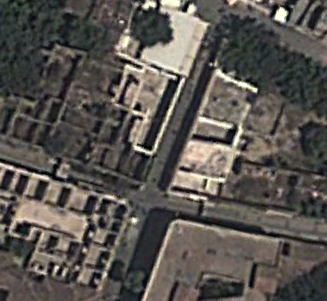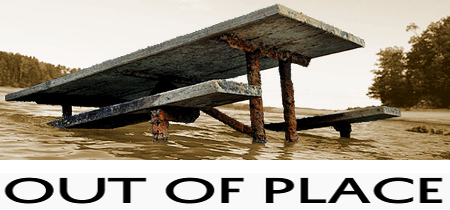Out of Place — An Introduction
I know things that others don’t,
I feel things that others can’t
And yet its not part of this time or this place.
— From the poem “Out of Time, Out of Place” by Daniel Watts
History and GIS – seems like a natural fit, doesn’t it? History certainly has a major geographic component to it, and one would think that GIS would easily help solve the often-complex challenges faced by those studying the past.
So why then is the end result more often than not like mixing oil and water? Why don’t all historians jump at the opportunity to use the many fine GIS tools available? And why don’t GIS professionals embrace historians with open arms? What gives?
Over the coming months, I’ll be exploring the surprising answers to these questions along with many remarkable examples of how GIS is being successfully used by historians. Together, we’ll explore old battlefields, examine the true causes of the depression-era “Dust Bowl” phenomenon, and gain new insights into famous maps of the ancient world. We’ll even see the Salem Witch Trials through different eyes.
 But first, a bit about me. I have what many of you could call an eclectic background. I spent seven years in the Canadian infantry, including a UN peacekeeping tour in Cyprus when I was 18. There’s something about having a Turk soldier point a high-powered rifle at your head at three in the morning in some God-forsaken alley to give you some perspective on life 😉
But first, a bit about me. I have what many of you could call an eclectic background. I spent seven years in the Canadian infantry, including a UN peacekeeping tour in Cyprus when I was 18. There’s something about having a Turk soldier point a high-powered rifle at your head at three in the morning in some God-forsaken alley to give you some perspective on life 😉
When I returned to Canada (unscathed), I studied four years of Mediveal English and History at Carleton University here in Ottawa. This helped me immensely (queue sarcasm) when I subsequently pursued an IT consulting career with first Nortel, then the Defense Department 😉 I’ve specialized in Windows Active Directory lifecycle management and configuration for the last eight years, helping maintain a network used by over one hundred thousand users worldwide.
So, what does all this have to do with GIS? Well, I’ve chosen to weave these disparate life strands (plus numerous other, often colourful threads) into a single unifying endeavour – the WikiWar Project.
 The primary goal of WikiWar is to animate all of World War Two in Google Earth. The data in question, ultimately all one hundred million combatant records, is being crowdsourced and subsequently geo-tagged by volunteer contributors. Every single contribution is fully referenced, often with undisputable primary sources such as unit war diaries.
The primary goal of WikiWar is to animate all of World War Two in Google Earth. The data in question, ultimately all one hundred million combatant records, is being crowdsourced and subsequently geo-tagged by volunteer contributors. Every single contribution is fully referenced, often with undisputable primary sources such as unit war diaries.
While still in development, this three year old project is nearing public alpha trials. Soon, anyone with an interest in WWII will be able to watch all the battles play out at the divisional level in as little as five minutes. Eventually, you’ll be able to zoom in to the level of the individual soldier and click their icon to find out such details as other battles in which they served and medals awarded. You can get a good idea of the project by watching this two-minute overview video.
While WikiWar is designed to be easily used by anyone, I’ve been careful to consider the specific needs of professional historians and other academics in the humanities. Accordingly, I’ve conducted a fair amount of research into GIS and its rather limited use (thus far) in historical projects.
It is this research that provides the fodder for this column, and it is my hope that you will be at once enlightened, surprised, entertained, and inspired by my posts.
See you next month!
Bert de Bruijn







The video was pretty neat. I think historians just don’t use the tools. At university they teach the methodology on how to do historical research but none of the those methods are geospatial. You either have to make it so easy to use for them or teach them how to use GIS.
I believe that this will be a great help not only for historians but for teachers and students as well.
How I wish that kind of technology was available back when I was a student. It would have been to study history using that.
Guilty as charge. I am one of those who is not really aware of all the happenings about WWII. I can imagined if only our History class back then used similar presentation like that, I could have gotten a better grade. This will be a good opportunity for kids of this generation to know more about history. Nice!
I just hope that the presence of this technology will not lead our youth into spoiling for another war just to gain the experience.